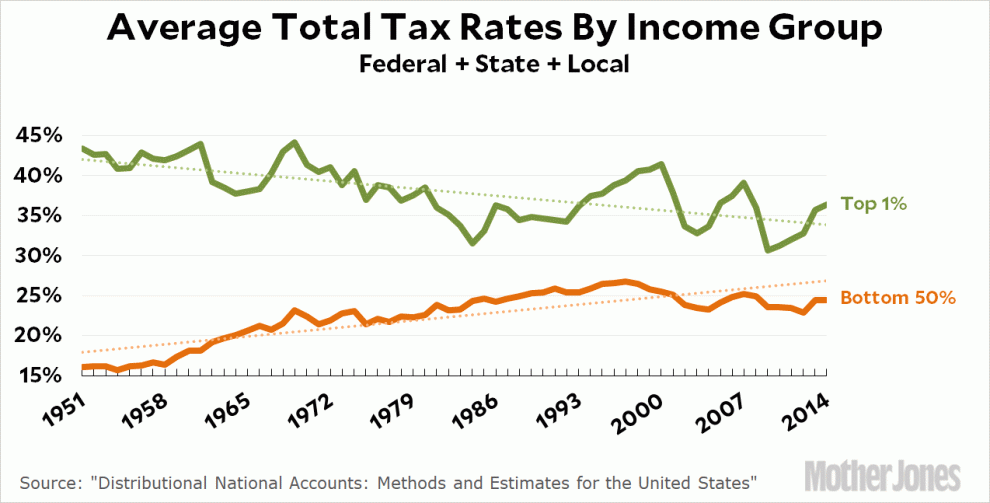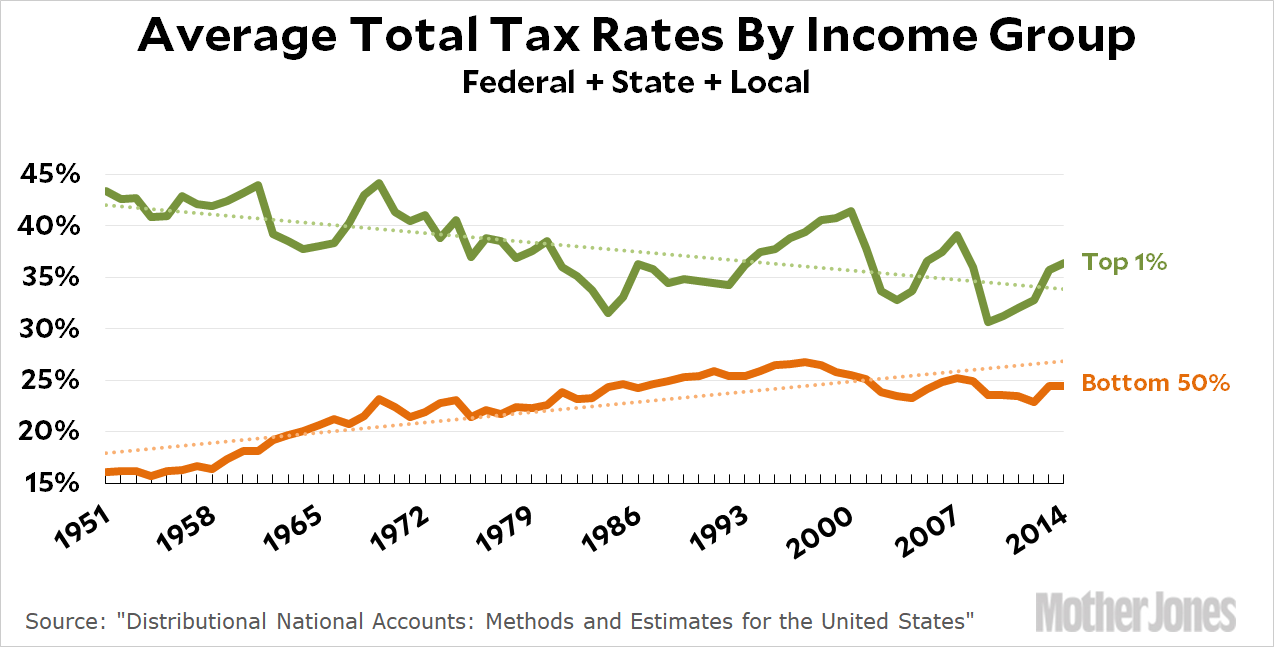
Over at Slate, Jordan Weissmann notes that the fabled 90 percent top tax rate on the rich back in the 1950s is a bit of a myth. It’s true, he says, that this was the top marginal rate on ordinary income, but the average tax rate on the rich was considerably less. In fact, Scott Greenberg of the conservative Tax Foundation argues that “taxes on the rich were not that much higher” back in the 50s than they are today.
My first thought was: Great. Now you tell us. I guess we never really needed those huge Reagan tax cuts after all.
Bygones. However, something else caught my eye. Greenberg relied on data from Gabriel Zucman, Thomas Piketty, and Emmanuel Saez on average tax rates over time. Here’s what that looks like:

This chart accounts for all taxes: federal, state, local, income, payroll, etc. Everything. And while it’s true that the rich didn’t pay 90 percent of their entire income in federal taxes back in 1951, it’s also true that their average tax rate has gone steadily down in the entire era since World War II. And this has happened at the same time that their share of total national income has nearly doubled.
Income way up, tax rates way down. Nice work if you can get it.















